29/10/2019
Haute Route Pyrenees 2020 - Stage Descriptions
Stage 1: Tardets – Pau
146KM / 3,650M+
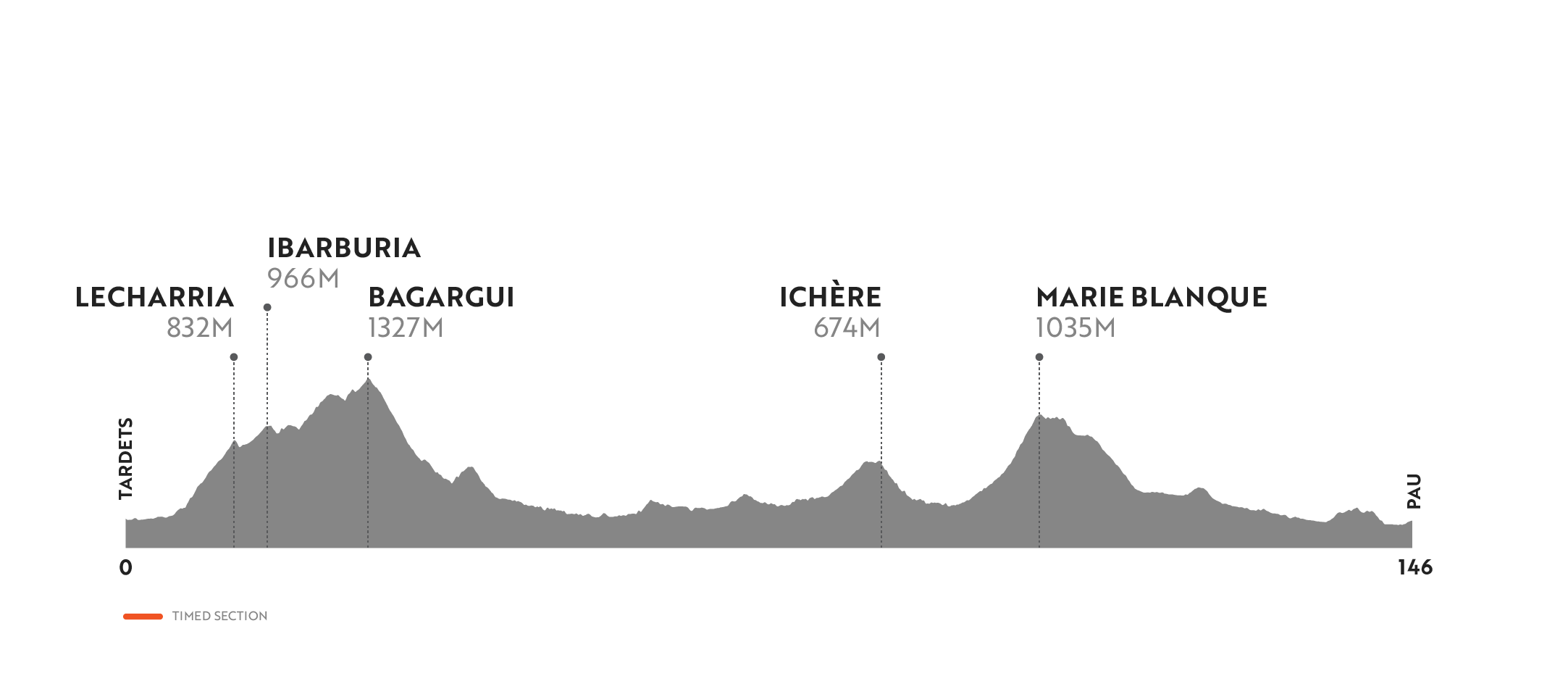
The first stage of the 2020 Haute Route Pyrenees begins with a transfer to the small town of Tardets-Sorholus, southwest of Pau, so the peloton can immediately enjoy quiet Basque Country roads. Take advantage of the first six kilometres to warm up your legs, because after reaching Alcay the 7-kilometre Col de Lecharria begins, with ramps up to 16% and prolonged sections at 13%. The Lecharria is really just the first part of a series of cols that stairstep up to the ultimate summit of the Col de Bagargui. As is typical of climbs in the Pyrenees, the steepness will change frequently, providing both surprisingly steep ramps and brief reprieves. Once you conquer the Bagargui, you’ll enjoy a long descent and rolling terrain – with a few short climbs – until you reach the Col d’Ichère. The climb is short – only 4 kilometres – but beware of descending the steeper side, with downhill grades of 16-20%. The final climb of the day is the 10-kilometre Col de Marie Blanque. The first half is a moderate climb, but save something for the final 4 kilometres that average around 11% and have ramps up to 18%. From the summit of this final climb it’s mostly downhill to Pau and the first finish line of the week.
Stage 2: Pau – Tarbes
152KM / 3,200M+
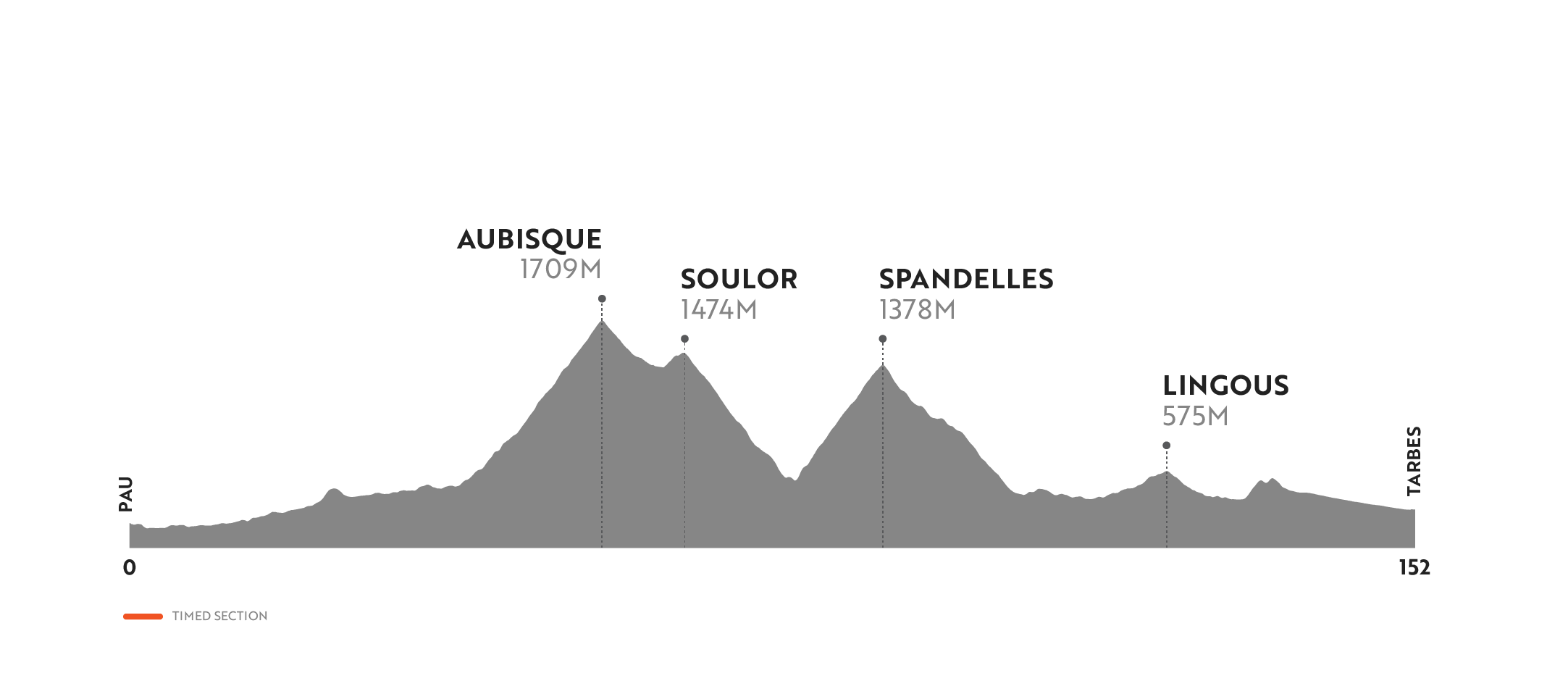
Leaving from Pau, Stage 2 features two of the most famous climbs in the Pyrenees: the Col d’Aubisque and Col du Soulor. Following a neutral rollout from the city, you’ll gradually climb through the first 40km of the stage. The gradual part ends as you pass Eaux-Bonnes and start up the 16.6-kilometre Col d’Aubisque. Look for the ski station of Gourette about 4 kilometres from the summit, and then you’ll climb out of the forest and enjoy panoramic views as you reach the giant bicycle sculptures at the summit. The Col du Solour is right next door, so following a 7-kilometre descent you’ll have just a short climb to reach the summit of the Solour. Enjoy the fast and technical descent to Ferrières and then get ready for a treat. The 10-kilometre Col de Spandelles is a hidden gem in the area, a tiny road, too narrow for the Tour de France, but perfect for Haute Route. The descent brings you down into Argèles-Gazost. The final 47 kilometres of the stage finish in Tarbes feature rolling hills and two smaller climbs, including the Col de Lingous.
Stage 3: Tarbes – Col d’Azet
88KM / 2500M+
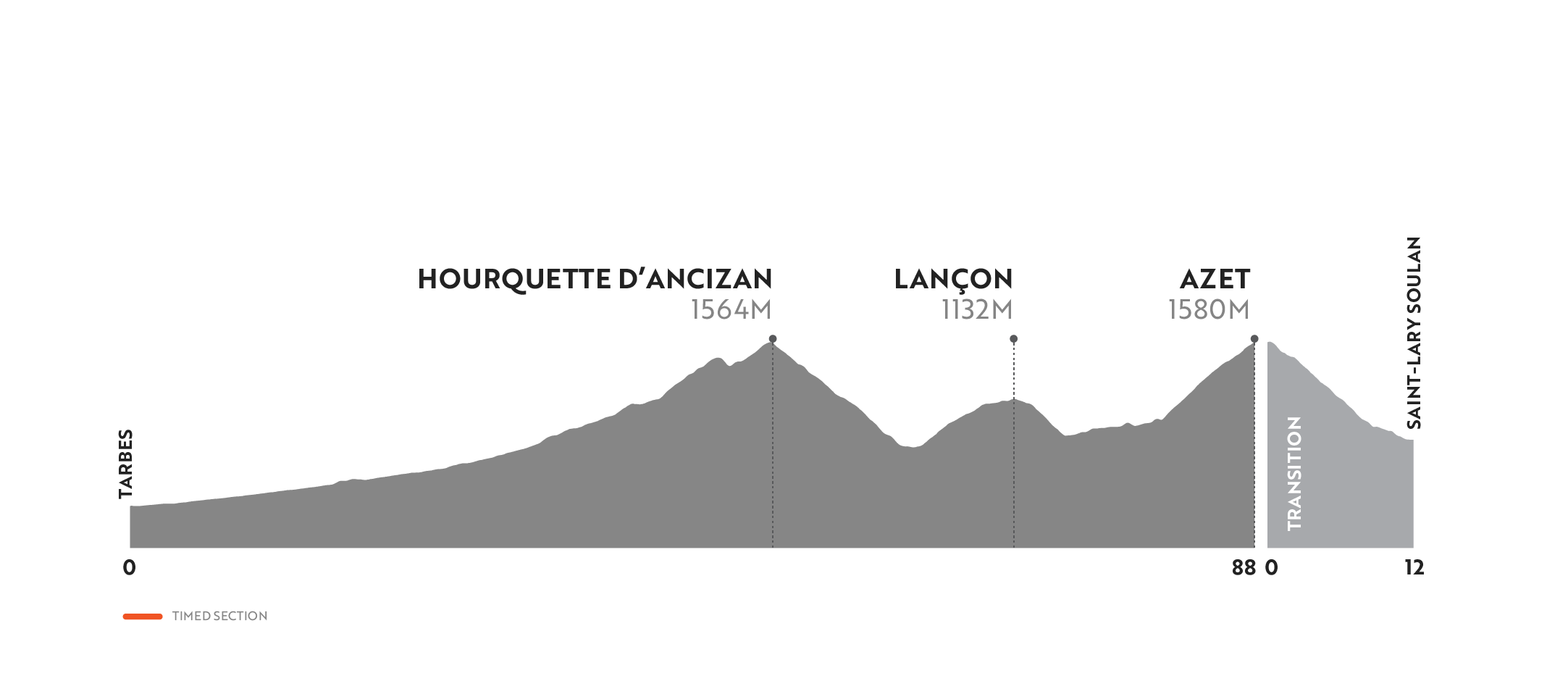
Stage 3 starts climbing right from the start line, gradually at first, and then a few steeper ramps before your reach Payolle. Leaving Payolle, you’ll start the true climb of the Hourquette d’Ancizan. Be careful not to get tricked by the false summit 4 kilometres from the actual top of the climb. You’ll get a reprieve for about a kilometer, which will help you power through the final three kilometres to top. Following a fun descent, you’ll climb the easier side of the Lançon climb and descend the steeper side to Bordères-Louron. The town of Génos is another seven kilometres up the valley, and that’s where you’ll turn on the Col d’Azet. Tour de France fans may be more familiar with the name Col de Val Louron-Azet, due to a stage finish at the Val Louron ski station at the summit. Whatever you call it, you’ll be glad to reach the finish line at the top, before cruising down the 12-kilometre descent to Event Village in Saint-Lary Soulan.
Stage 4: ITT Saint-Lary Soulan – Col du Portet
17.5KM / 1,400M+
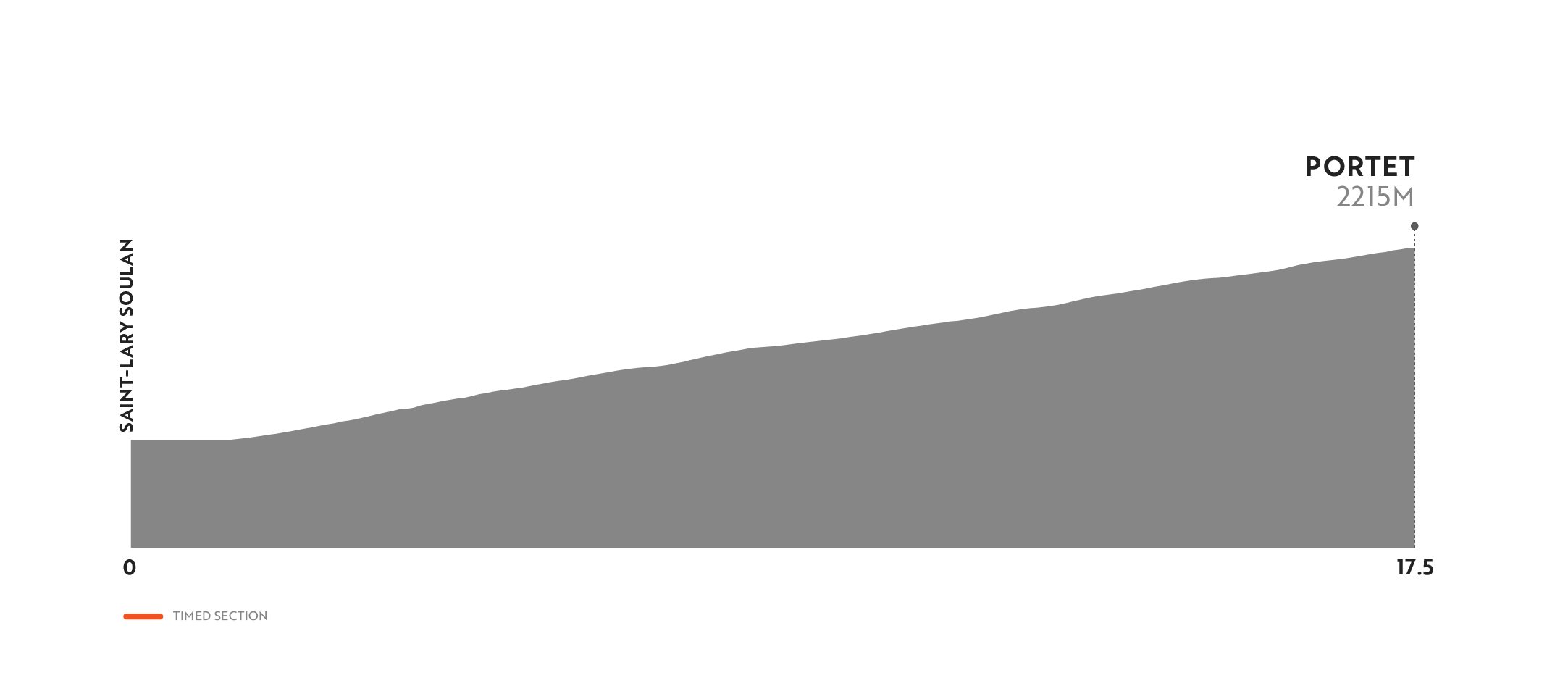
The Col du Portet is a recently-renovated road that hosted a Tour de France stage finish in 2018. The first kilometre is flat as you exit the town of Saint-Lary Soulan, and you’ll see the climb cut across the cliff as you approach it. The first eight kilometres of the climb are steep, with prolonged sections above 10%. The road here is wide and steady, as it is the main route to the ski station at Pla d’Adet (another Tour de France summit finish). Instead of turning toward Pla d’Adet, you’ll turn on to a much smaller road to continue up the Col du Portet. Soon you’ll enter a series of 11 switchbacks before the road straightens out for a more direct route to the summit. This second half of the climb is more typical of the Pyrenees, with quick and frequent changes in steepness compared to the steadier first half. When you reach a narrow tunnel, you’ll have about 1 kilometre left to climb to the finish.
Stage 5: Saint-Lary Soulan – Lourdes
123KM / 3,100M+

Stage 5 of the 2020 Haute Route Pyrenees starts by climbing over Col d’Azet the opposite way you experienced it during Stage 3. After descending the pass you’ll have about 14 kilometres of gradually descending valley road to the base of the Col d’Aspin. Situated between the Col de Peyresourde and Col du Tourmalet, it is often used by the Tour de France to link the two. The 12-kilometre climb features incredible views and is not quite as steep as neighboring mountains, but save something in your legs for the massive climb up to the finish line atop the Tourmalet. The Tour de France has visited the Tourmalet more than 80 times, making it the race’s most frequently climbed mountain. The ascent from Sainte-Marie-de-Campan is 16.5 kilometres long. The first four are easy to moderate, before the grade increases for the last 12. When you pass the ski resort of La Mongie, you’ll know you only have 5 more kilometres to the top. At the summit, be sure to pause to take photos of the giant steel sculpture called the “Géant du Tourmalet” and pop into the café to see the historic cycling photos on the walls. After the 19-kilometre descent to Luz-Saint-Sauveur, it will be helpful to find some friends for the 29-kilometre gradual descent to Lourdes.
Stage 6: Lourdes – Lourdes
100KM / 2,250M+
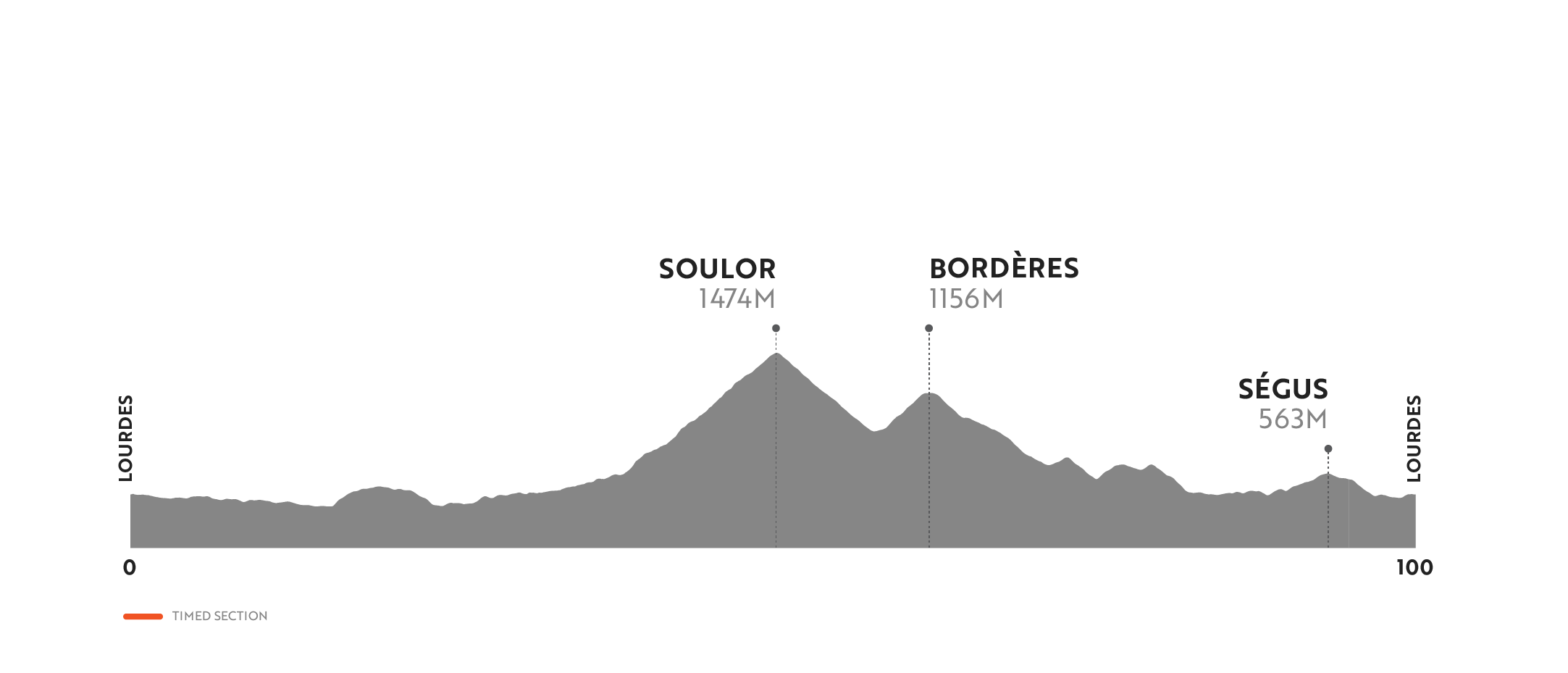
Remember the technical descent from the Col du Soulor on Stage 2? After a rolling first 40 kilometres to begin Stage 6, you’ll start the 12-kilometre climb up the north side of the Col du Solour from Ferrières. Once over the summit, you’ll descend to Arrens and turn right to climb the last 3.6 kilometres of the Col de Bordères. This portion of the climb averages about 7%, but features some steep ramps up to 14%. After descending through Argèles-Gazost, the final 25 kilometres of the stage include two smaller climbs in the valley before you finish in Lourdes.
Stage 7: Lourdes – Pau
107KM / 2,200M+
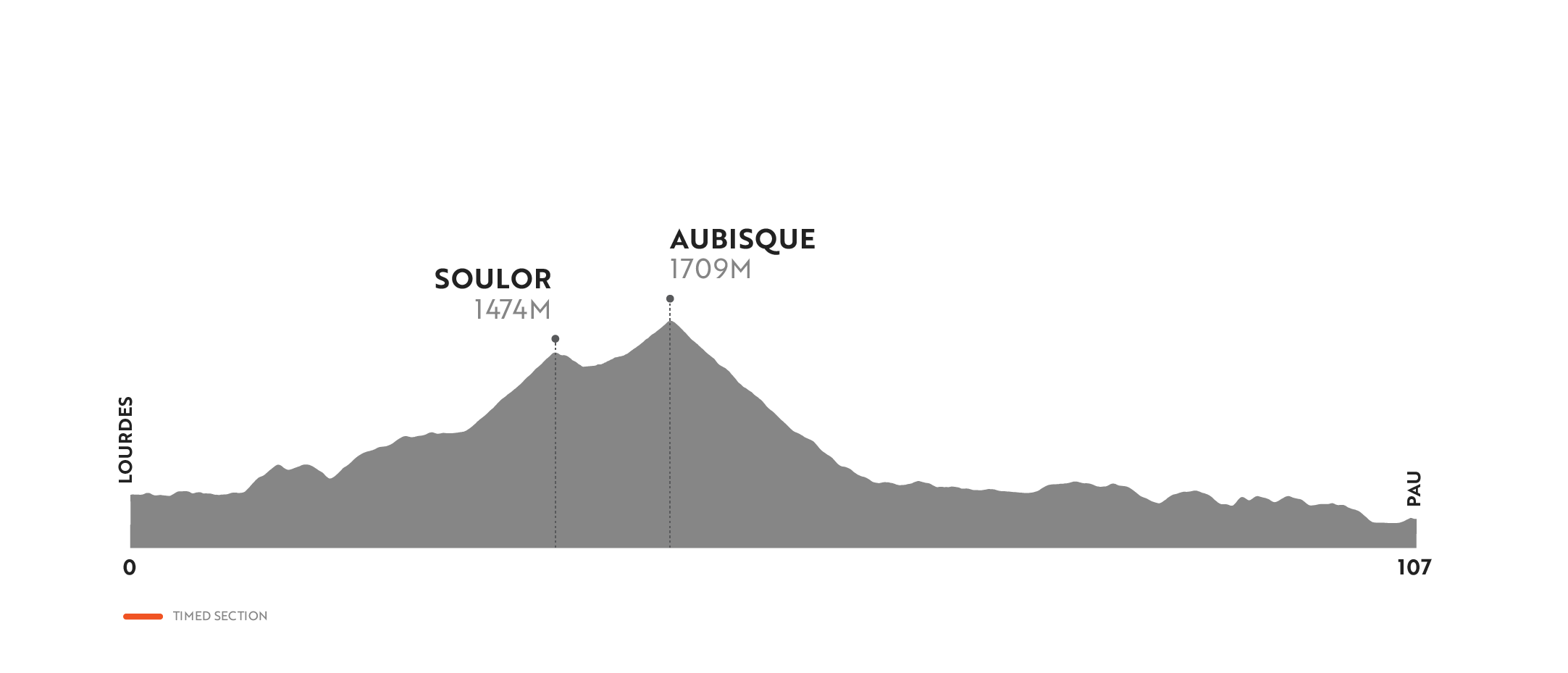
The most common way for the Tour de France to climb the Col du Solour is from Argèles-Gazost, and that’s the way you’re going to do it for Stage 7 of the 2020 Haute Route Pyrenees. Riding from Lourdes you’ll have small climb to warm up your legs before reaching Argèles-Gazost and starting the 19-kilometre climb up the Col du Soulor. The first 6.5 kilometres are tough climb, and then there’s a flat reprieve for about 5.5 kilometres. The last 7 kilometres get steep again, particularly with about 2.5 kilometres remaining to the summit. Enjoy the short descent, but be prepared to start climbing again after you pass through a short tunnel. From here you have about seven kilometres to the summit of the Col d’Aubisque, the final major climb of the event. Enjoy the long descent past Laruns, and then find some riders to work with on the gradual descent and rolling hills leading back to the final finish line in Pau. Congratulations, you’re an Haute Route Finisher!
